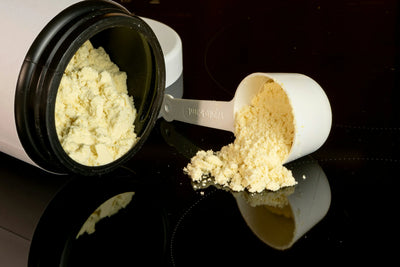Introduction
During the cold winter months, not only are humans prone to feeling dry and tight skin, but dogs at home can also suffer from dry, flaky, and even itchy skin due to the low temperatures and humidity. This discomfort is not only irritating to your dog, but can also lead to more serious skin problems.
Dog Dry Winter Skin: Causes & 5 Winter Care Tips to Prevent Flakiness
As a loving pet owner, understanding the causes of dry dog skin in the winter and having a scientific approach to care for it will keep your fur child healthy and comfortable through the cold season. This article will delve into the causes of dry dog skin and provide five practical care tips to help your dog have a moisturized winter.

1. Causes of Dry Skin in Dogs in Winter
Skin problems in dogs are often the result of a combination of factors, especially during the winter months, when the environment, care habits, and diet can all have a significant impact on skin health. Here are five common causes of Dry Skin in dogs:
(1) Climatic factors: the “invisible killer” of dryness
Winter air humidity plummets, and the use of cold outdoor environments and indoor heating further exacerbates the dryness of the air. Although the heating brings warmth, but like a “water-sucking monster” as the moisture in the air, depriving the dog of the natural oils on the surface of the skin. The loss of this protective barrier, the dog's Dry Skin easily become dry, rough, and even flaking or cracks.
(2) Bathing too often: good intentions do bad things
Many owners want their dogs to be clean and bathe them frequently, but this can backfire in winter. Too much bathing can wash away the natural oils from the skin, causing it to lose its protective layer and become more fragile. In particular, the use of human shampoos or cleansing products containing harsh chemicals can further damage the skin barrier, exacerbating Dry Skin and itching.
(3) Dietary imbalance: the “internal problem” of nutritional deficiencies
The health of your dog's skin is closely related to its diet. If the daily diet lacks essential fatty acids such as Omega-3 and Omega-6, or key nutrients such as vitamins A and E, the skin's ability to moisturize and repair will decline. Long-term consumption of low-quality dog food or food that lacks balanced nutrition will make your dog's skin Dry Skin and lack of elasticity.
(4) Allergic reactions: the “invisible trigger” of environmental changes
Changes in the indoor environment during winter, such as using a new carpet cleaner, air freshener or changing the material of your pet's mattress, can trigger an allergic reaction in your dog. These allergens can irritate the skin, causing redness, swelling, itching or flaking. Sensitive dogs are especially susceptible and owners need to be extra vigilant.
(5) Underlying skin disease: a “signal” not to be ignored
Dry Skin in some dogs may not just be an environmental or care issue, but a sign of an underlying skin disease. For example, fungal infections, parasites (such as fleas or mites) or atopic dermatitis can cause Dry Skin, flaking or even localized hair loss. If your dog is scratching frequently or has skin abnormalities, it may be a “wake-up call” for disease.
2. 5 Practical Care Tips to Prevent Dry Skin in Dogs in Winter
Once you understand the causes of Dry Skin, you can next help your dog stay away from dryness with scientifically sound care. The following five tips are easy to follow, but can significantly improve the health of your dog's skin.
(1) Maintain indoor humidity: “hydrate” your dog's skin
Dry Skin is the enemy of your dog's skin, and using a humidifier is a simple and effective solution. Maintaining indoor humidity between 40% and 60% can effectively reduce water loss and keep your dog's skin moisturized. If you don't have a humidifier in your home, place a basin of water next to the heater to allow the water to evaporate naturally and add moisture to the air. In addition, keeping the room ventilated to avoid the air being too stuffy can also make your dog more comfortable.
(2) Reduce the frequency of bathing: Gentle care of the skin barrier
Try to minimize the number of times you bathe your dog in winter, and it is recommended that you wash it once every 2-3 weeks. Choose gentle pet-specific shampoos and avoid products containing artificial fragrances or harsh chemical ingredients. When bathing, the water temperature should not be too high, and gentle rinsing with lukewarm water is sufficient. After washing, gently pat dry with a soft towel and avoid rubbing hard to avoid irritating the skin. If the dog is only partially dirty, you can use pet wipes to wipe instead of a full body bath, both clean and skin care.
(3) Natural moisturizers: nature's gentle nourishment
Natural moisturizers are a “secret weapon” for relieving Dry Skin in dogs. Coconut oil, olive oil or aloe vera gel have a good moisturizing effect, which can replenish the skin with moisture and lock the oil. Before use, it is recommended that you conduct an allergy test on a small area of your dog's skin, apply a small amount and observe for 24 hours to make sure there is no redness, swelling or discomfort before applying it to a large area. For dogs with particularly Dry Skin, apply 1-2 times a day, gently massaging until absorbed, until the skin is smooth again. It should be noted that the amount of application should not be too much, so as not to grease the hair or attract dust.
(4) Optimize diet: Nourish skin from inside out
Healthy skin cannot be achieved without balanced nutrition. Choosing foods rich in Omega-3 and Omega-6 fatty acids, such as salmon, fish oil or flaxseed oil, can enhance the skin's moisturizing ability and improve the coat's luster. Some high-quality dog foods on the market already have these nutrients added. When shopping, check the ingredient list carefully and avoid choosing products with too many fillers or artificial additives. In addition, ensure that the dog drinks enough water every day to keep the body well hydrated and improve the skin condition from the inside out.
(5) Regular Skin Checks: Prevent Problems Before They Happen
Regularly checking your dog's skin is key to preventing problems. Owners can spend a few minutes each week looking closely at their dog's skin and coat to check for signs of redness, hair loss, rashes or parasites. Pay special attention to areas that can be easily overlooked, such as the abdomen, the backs of the ears and the base of the tail. If you notice frequent scratching or skin abnormalities in your dog, it is advisable to consult your veterinarian for professional diagnosis and treatment as soon as possible. For dogs with sensitive skin, you can use pet-specific wipes for daily cleansing to minimize bacterial or fungal growth and keep the skin clean and healthy.
The low temperature and dryness of winter is a big challenge for dogs' skin, but through scientific care, owners can totally help their beloved pets to stay away from dryness and itching. Maintaining indoor humidity, reducing the frequency of bathing, using natural moisturizers, optimizing the diet and regular skin checkups are five simple but practical ways to prevent and alleviate skin problems in dogs, leaving their coats soft and shiny and their skin hydrated and healthy. If your dog's skin problem persists or worsens, do not treat it on your own; it is wise to consult a professional veterinarian promptly.
In this cold season, dogs are not only our faithful companions, but also the sunshine that brings warmth to the family. Taking care of their skin health will not only make them more comfortable, but also make your companionship more cozy and beautiful. Let's work together to create a hydrated and worry-free winter for your dog!
Dog Flaky Skin: How to Tell If It’s Allergies, Mites, or Just Dry Weather
In the cold and windy winter, the dry air not only makes our skin tight and dry, but also the family's furry children - dogs - often feel uncomfortable because of Dry Skin, flaking and even itching. When you see your dog scratching, or even having redness or hair loss on the skin, it's hard for owners to avoid heartache and anxiety. Dry Skin may seem like a small problem, but it can hide more complex health risks. Understanding the common causes of Dry Skin in dogs, and learning to differentiate between dry weather, allergic reactions, and parasites can help you take better care of your pets, so that they can have moist and healthy skin even in the cold winter months. This article will provide you with a detailed analysis of the causes of Dry Skin in dogs, differentiation methods and practical care advice to help your fur child survive the winter!
1. Common Causes of Dry Skin in Dogs
Dry Skin in dogs can be caused by a variety of reasons, from the external environment to internal health problems can be “behind the scenes”. Here are five common culprits:
(1) Dry weather: winter's “moisture predator”
Winter's low temperatures and indoor heating will make the air humidity plummet, Dry Skin is like a “water-sucking monster” that silently drains the natural moisture and oils from your dog's skin. The loss of this protective barrier, the dog's Dry Skin easily become dry, rough, and even the appearance of small white flakes, especially in the abdomen, back and other areas of thin hair is more obvious.
(2) Allergic reactions: the “invisible enemy” of sensitive skin
Dogs may have allergic reactions to food (e.g. certain proteins), pollen, dust mites in the environment, and even cleaning agents or new carpets at home. These allergens can irritate the skin, causing inflammation, itching and Dry Skin. Allergic skin problems are often accompanied by scratching or licking behaviors, and sometimes localized redness and swelling that can be bothersome to dogs.

Noora Skin & Coat Health Supplement
(3) Parasites: tiny but “powerful” troublemakers
Fleas, mites and other parasites are a common cause of skin problems in dogs. They suck blood from the skin or cause inflammation, leading to itching, hair loss and even Dry Skin. Mites, in particular, are difficult to detect with the naked eye but can add to your dog's skin problems. Parasitic infections are usually accompanied by visible scratching behavior and can even lead to secondary infections in severe cases.
(4) Dietary imbalance: the “internal problem” of nutritional deficiencies
Skin health is closely related to diet. If your dog's diet is deficient in Omega-3 and Omega-6 fatty acids, or key nutrients such as vitamins A and E, the skin's ability to moisturize and repair itself will be significantly reduced. Long-term consumption of low-quality dog food or single-nutrient diets may leave the Dry Skin dry and dull, and the coat loses its luster.
(5) Underlying health problems: hidden “signals”
Certain endocrine diseases, such as hypothyroidism or Cushing's disease, can affect your dog's skin metabolism, leading to Dry Skin, flaking and even thinning hair. These health problems are often accompanied by other symptoms such as unusual weight fluctuations, lethargy or behavioral changes. If skin problems persist, it may be the body signaling for help.
2. How to Differentiate Between Different Causes of Dry Skin
Dry Skin can be caused by different reasons, with different symptoms and characteristics. Below are some common points to help you quickly identify the culprit:
(1) Dry Skin due to Dry Weather
Symptoms: Dry Skin, white flakes, usually more obvious in winter, concentrated in the back, abdomen and other areas.
Characteristics: There is usually no strong itching or redness, and the symptoms are mild, concentrated in the areas with thin hair.
(2) Dry Skin due to Allergy
Symptoms: Itching of the skin is obvious and may be accompanied by redness, swelling and flaking, and the dog frequently scratches or licks specific areas (e.g., paws or abdomen).
Characteristics: Symptoms may worsen suddenly after exposure to allergens (e.g. new foods or cleaning agents), seasonal allergies may be associated with environmental factors such as pollen.
(3) Dry Skin due to parasites
Symptoms: Intense itching, localized hair loss, redness and swelling of the skin, sometimes small red spots or parasite feces are visible.
Characteristics: Combing the hair with a fine-toothed comb may reveal fleas or black particles (flea feces), and mite infestation may be accompanied by thickened or crusted skin.
(4) Dry Skin due to Other Health Problems
Symptoms: Dry Skin, flaking, may be accompanied by systemic symptoms such as weight gain or loss, lethargy, change in appetite.
Characteristics: Symptoms are persistent and difficult to improve with daily care, and may be accompanied by thinning hair or symmetrical hair loss.

3. How to Determine if Your Dog Has Dry Skin?
To accurately determine the dog's skin problems, the owner needs to act as a “detective”, starting from the symptoms, environment and physical examination:
(1) Observe the symptoms
Dry Skin: White flakes appear on the surface of the skin, especially when gently stroked.
Itchy behavior: the dog frequently scratches, licks or gnaws the skin, and certain parts of the skin may appear red.
Hair loss: localized or generalized thinning of hair, with areas of significant hair loss in severe cases.
Redness or inflammation: Redness, heat sensation or small pustules on the skin, suggesting possible infection or allergy.
(2) Check the environment
Humidity level: Use a hygrometer to check indoor humidity. Indoor humidity below 40% in winter may exacerbate Dry Skin.
Allergen screening: Watch for recent changes in dog food, detergents or pet supplies, and observe if symptoms worsen after the dog has been in a specific environment (e.g. outdoor grass).
(3) Check for parasites
Fleas and mites: Run a fine-toothed comb through your dog's coat to check for fleas, black particles or abnormal thickening of the skin. Focus on areas where parasites tend to hide such as the ears, abdomen and root of the tail.
4. How to Relieve Dry Skin in Dogs?
Taking precise care for different causes can effectively relieve your dog's skin discomfort. The following are targeted suggestions:
(1) Coping with dry weather
Increase humidity: Use a humidifier at home to keep the indoor humidity at 40%-60%. Or place a water bowl next to the heater to allow moisture to evaporate naturally.
Reduce bathing: Bathe once every 2-3 weeks in winter, use mild pet-specific shampoos, avoid hot water and hard scrubbing, and gently pat dry.
(2) Coping with allergies
Avoid allergens: Try to identify and isolate allergens, e.g. changing hypoallergenic dog food, avoiding the use of irritating detergents.
Anti-allergy treatment: Under the guidance of your veterinarian, use antihistamines or topical anti-allergy sprays to relieve itching and inflammation.
(3) Coping with parasites
Deworming care: Use veterinarian-recommended deworming products (e.g. drops or oral medication) regularly to prevent flea and mite infestation.
Environmental cleanliness: Wash your dog's mattress, toys and living areas frequently to minimize parasite breeding.
(4) Coping with other health problems
Professional diagnosis: If you suspect that the skin problem is caused by endocrine disease or other health problems, take your dog to the doctor promptly to receive blood test or skin biopsy.
Comprehensive treatment: Medication or lifestyle adjustments may be required, depending on veterinary advice.
Dry Skin in dogs can be triggered by dry weather, allergies, parasites or other health issues, but with careful observation and scientific care, owners are well positioned to help their beloved pets regain their health. By examining symptoms and troubleshooting environmental factors and parasites, you can initially determine the root cause of the problem; then target the problem with a combination of humidification, reduced bathing, deworming or medical attention. If the skin problem persists or worsens, don't delay; early consultation with a veterinary professional is key.
In this cold winter, dogs are not only our faithful companions, but also the warm sun at home. Taking care of their skin health will not only keep them away from itching and discomfort, but also make your company more cozy and beautiful. Let's create a hydrating and cozy winter for your dog together!
Best Dog Dry Skin Remedy: DIY Oatmeal Soaks, Coconut Oil & Vet-Approved Treatments
In the cold winter, the dry air not only makes our skin tight and dry, but also the family's furry children - dogs, often because of Dry Skin and scratching more than, and even flaking, redness, swelling or infection. It's hard for owners to look at their dogs in discomfort without feeling heartbroken and anxious. The good news is that with simple home care and professional veterinary treatment, we can totally help our dogs say goodbye to their Dry Skin woes and regain hydrated and healthy skin! In this article, we will introduce you to homemade oatmeal baths, coconut oil treatments, and veterinarian-recommended scientific treatments, which are practical methods that are not only easy to follow, but will also help your beloved pet glow in the cold winter. Let's make a cozy winter for your dog together!
1. Homemade Oatmeal Bath: Nature's Gentle “SPA”
Oatmeal baths are a secret weapon for relieving Dry Skin in dogs, and they are easy to make and effective. Oats are rich in anti-inflammatory and moisturizing ingredients that soothe itchiness, reduce inflammation, and restore softness and smoothness to your dog's skin. Whether it's mild dryness or mild itching, oatmeal baths can provide a soothing “spa-like” experience for your dog.
(1) Production and use of oatmeal bath method
Required materials:
Pure oatmeal (no sugar, no additives, preferably natural oats)
Warm water (about 37-40°C, close to the dog's body temperature)
Optional: a small amount of high-fat milk, avocado oil or olive oil (to increase the moisturizing effect)
Operation Steps:
Grind the oats: Place the oatmeal in a blender or grinder and grind to a fine powder. Finely ground oatmeal dissolves more easily in water for a moisturizing effect.
Mix oatmeal water: Add appropriate amount of warm water to a bath tub or large container, slowly sprinkle in 1-2 cups of oatmeal powder and mix well until the water is slightly milky and the oatmeal ingredients are fully dissolved.
Soak: Allow your dog to soak in the oatmeal water for 10-15 minutes, during which time you can gently massage the skin with your hands to help the oatmeal ingredients penetrate and relieve itching.
Gentle Rinse: Gently rinse off with lukewarm water to ensure there is no oatmeal residue that could cause skin irritation. Gently pat dry your dog's coat and avoid rubbing it vigorously.
(2) Precautions
Choose Pure Oats: Ensure that you use pure oats that are sugar and flavor free to avoid added ingredients that can irritate your dog's skin.
Control soaking time: soaking time should not exceed 15 minutes, too long may weaken the skin's natural protective barrier.
Allergy test: If adding milk or oil, test on a small area of your dog's skin first to confirm there is no allergic reaction before applying all over the body.
2. Coconut Oil Treatment: A Natural “Moisturizer”
Coconut oil is an “all-rounder” in dog skin care. Not only does it deeply moisturize Dry Skin, but it also relieves itching and promotes skin healing due to its antibacterial, antifungal and anti-inflammatory properties. Whether used externally or internally, coconut oil can energize your dog's skin from both inside and outside.
(1) Usage
Topical application: Take an appropriate amount (about the size of a pea) of Organic Virgin Coconut Oil and gently apply to your dog's Dry Skin, itchy or flaky skin, massage gently until absorbed. Apply 1-2 times a day for several days until skin improves.
Add to Food: Add a small amount of coconut oil to your dog's daily diet (1/4 teaspoon per day for small dogs, 1/2-1 teaspoon per day for medium to large dogs) to nourish the skin from the inside and enhance coat shine.
Massage care: For particularly dry areas (e.g. paw pads or elbows), massage gently for 2-3 minutes after application to promote blood circulation and oil absorption.
(2) Precautions
Choose high quality coconut oil: Give preference to organic virgin coconut oil and avoid products containing fragrances or additives that may irritate the skin.
Control the dosage: Avoid applying too much when using externally to avoid greasy hair or attracting dust; strictly control the dosage when taking internally, as overdose may cause digestive discomfort.
Allergy testing: Before first use, apply a small amount of coconut oil to a small area of your dog's skin and observe for 24 hours to ensure there is no redness, swelling or discomfort.
3. Veterinarian-recommended Scientific Remedies: Professional Skin Health Care
If your dog's Dry Skin is a persistent problem, or if home care isn't effective, it's wise to consult your veterinarian. Your veterinarian will be able to recommend a personalized treatment plan based on your dog's specific condition to ensure that the problem is addressed at its root. Here are a few common veterinarian-recommended treatments:
(1) Moisturizing shampoo: gentle cleansing and moisturizing
Veterinarians often recommend moisturizing shampoos designed specifically for dogs, containing natural ingredients such as oatmeal, chamomile, aloe vera or tea tree oil. These shampoos lock in moisture while cleansing, relieving dryness and itching. When using them, keep the water temperature mild and gently pat dry after washing to avoid damaging your skin with the high heat of a hair dryer.
(2) Omega-3 fatty acid supplements: nourishing from within
Omega-3 fatty acids (e.g. fish oil or flaxseed oil) are a “treasure trove” of nutrients for skin health, reducing inflammation and strengthening the skin barrier. Your veterinarian may recommend adding a moderate amount of Omega-3 supplements to your dog's food on a daily basis, and it usually takes a few weeks to see significant results.
(3) Probiotics: the dual guardian of gut and skin
Healthy intestinal flora is closely related to skin condition. Probiotics can regulate your dog's immune system and reduce allergic inflammation, thus improving Dry Skin and itching. Veterinarian-recommended probiotics for pets are usually available in powder or capsule form and are suitable for long-term supplementation.

(4) Medication: for serious problems
If your dog's skin problem is accompanied by severe itching, redness, swelling or infection, your veterinarian may prescribe antihistamines, corticosteroids or antibiotics. These medications can provide quick relief, but you need to follow your veterinarian's instructions closely to avoid side effects. Long-term use of medications needs to be reviewed regularly to ensure your dog's overall health.
Dry Skin in dogs not only affects their comfort, it can also evolve into a more serious health issue. Fortunately, with homemade oatmeal baths, coconut oil treatments, and veterinarian-recommended professional remedies, it's easy to help your beloved pet regain hydrated, healthy skin. An oatmeal bath is a gentle “spa” treatment that soothes itching; coconut oil moisturizes both inside and out; and veterinary science helps to treat stubborn problems. Owners can flexibly combine these methods according to the severity of the dog's symptoms to gradually improve the skin condition.
It is important to note that if your dog's skin problem persists or symptoms such as redness, swelling, hair loss or unusual odor appear, do not delay and consult your veterinarian for professional diagnosis and treatment advice. After all, every dog is a unique family member and deserves to be cared for with all our heart. In this cold winter, use love and science to create moisturized and glowing skin for your dog, so that they can accompany you in the best condition and warm up the whole winter!





